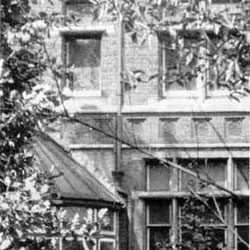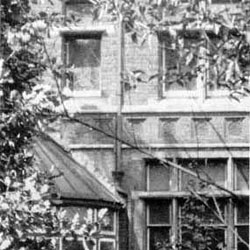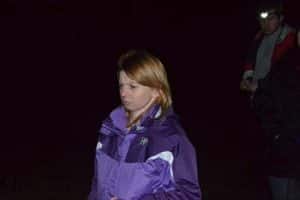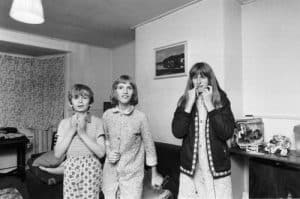16 Montpelier Road in Ealing, London has a spooky and sad past, says guest writer MB FORDE, author of Eerie Britain

The intriguing story of 16 Montpelier Road was first brought to the nation’s attention by the late, great ghost hunter Andrew Green.
Back in the September of 1944, as a boy, Green visited the house with his father, who was a council housing officer.
As young Green stood in the driveway, a warm autumnal sunshine bathed him. He looked up at the house that rose above and noted the curious tower that projected from its roof. Little did he know then how close to death he was about to come.
Number 16 stood in the West London suburban district of Ealing, empty and unloved. The city at that time was no stranger to vacant and run-down houses—the Second World War still raged around the globe and the Luftwaffe’s bombs still fell on the city and displaced many people—but this house was different. Even before the War the house had stood empty; for 10 years, in fact.
The reason why nobody would live there was a grisly and perplexing one. In 1934, a nursemaid had thrown herself out of the tower’s top window, plummeting some 70 feet to the garden below—but not before she had thrown her young ward off first. Both had died.
(Green says that his mother, a nurse, actually attended the aftermath of this grim event and that, while there, she saw spectral footprints appear in grass, as if an invisible person was walking about.)
What happened at 16 Montpelier Road?
This was not the first tragic death to occur at the house, either. Forty-seven years earlier, a 12-year-old girl named Anne Hinchfield had also leapt to her death from the same room in the same tower. And it doesn’t stop there, because Green goes on to tell us that 20 suicides had all taken place at 16 Montpelier Road —the hub of death being that strange tower.
By the time of Green’s visit, the rooms of Number 16 were being used by Ealing Town Council as storage spaces for goods that had been saved from bomb-damaged properties nearby. Workmen were sent in to repair the house and generally fix it up, but a disgusting, sulphur-like smell, the unexplained disappearance of tools, and an oppressive atmosphere had them leaving after only a few hours; and subsequent crews were equally as objectionable. Number 16 Montpelier Road’s infamy began to grow.

The knowledge of all of this must have only sparked Green’s interest further as, when he found the ladder that led up to the tower’s top floor, intrepidly, he decided to take a look. He climbed the rungs, he tells us, helped—feeling something gripping him about the waist and aiding his ascent. At the top, an extraordinary view of the locale presented itself. Then, as the boy looked out across London’s roofs, he heard a curious voice in his head.
“Have a look in the garden,” it said. “Walk over to the parapet.”
There must have been something inexorable and compelling about the voice, for Andrew Green obeyed.
He wandered past strange symbols that were carved into the brickwork around him and approached the parapet’s edge. “It’s only 12 inches down to the lawn.” the voice continued. “You won’t hurt yourself.”
Green sat down on the parapet’s edge and prepared to jump, but before he could launch himself into the air, a pair of strong hands closed around him. The hands were his father’s, and he found himself being dragged backwards to safety.
In the afternoon, as he was leaving, he took a final photograph of the house. The building was locked up and empty at the time and, as he raised the camera to his eye, he saw nothing unusual about the place. The photograph still exists today—with some viewers insisting that they can make out the ghostly image of a young girl in Victorian dress. Was this the spectre of poor Anne Hinchfield, captured on film as she watched Andrew Green’s departure? Or was it simply an interesting reflection?
By the 1950s, the house’s interior had been altered to accommodate the inclusion fifteen flats. Some of the occupants still complained of strange goings-on: mostly phantom footsteps and the re-emergence of that bizarre, sulphurous stench every month or so.
Two decades on and the house was demolished entirely to make way for a new block of apartments called Elgin Court. Some writers say that residents still report weird goings-on.
So, assuming the suicides happened, what could have caused such a series of tragic deaths?
One theory lies in black magic. After the story of 16 Montpelier Road was published in Green’s 1973 book, Our Haunted Kingdom, an elderly lady contacted him. She claimed to have worked as a maid in the house in the late 1800s and described how black rugs and candles would be carried up to the tower every Friday night. Was this part of some bizarre magical rite? The maid certainly suggested so. Couple this with those strange symbols that Green noticed were carved into the tower room’s brickwork and it is easy to see why some people point to dark, magical forces being released into the house.
As for that unpleasant smell, well, Andrew Green described how the room from which it seemed to emanate had actually been set up as a chemical laboratory at some time in its past. Could it have been possible that some foul-smelling chemical or concoction had seeped into the building’s fabric, its pungent scent reignited under certain weather conditions?
For those daring readers wanting to investigate the story themselves, well, you’re in luck, as properties in Elgin Court, Montpelier Road are currently available…
Watch Spooky Isles video on 16 Montpelier Road with author John West
MB FORDE is the author of Eerie Britain 1 and Eerie Britain 2. You can purchase them from Amazon here.







I remember reading this story in Andrew Green’s ‘Our Haunted Kingdom’ years ago and was fascinated by the tale of this beautiful but tragic house.
I am a believer in the paranormal and decided to do my own investigation as much as I could into the history of 16 Montepelier Road, I’m not sure if anyone reading this ever has but I was disappointed to discover the story is basically lies.
I searched the history of the house from records at the National Archives, local press and all kinds of census records discovering who lived there throughout its history and subsequently the occupants movements and fates.
There was never 20 suicides or murders here, the occupants throughout the years came and went like any other. The 2 main historical points Andrew Green mentions in his book never took place.
There was NO Anne Hinchfield/Hinchcliffe (both surnames I’ve seen printed) ever living at this address. There was also no tragic suicide of a nursemaid and infant in the 1930’s.
In short, my own research found NO tragic events at this house.
Without attempting to discredit Mr Greens personal story at all, I’m not sure where he got his story from, for the bulk of it never actually happened.
I happen to live a road away, at the top next to Montpelier. I know two residents at Montpelier Court today who say they do hear screams & odd happenings in the night. I do feel there is something spooky about the place for 40 years & that was even when I did not know of its history.